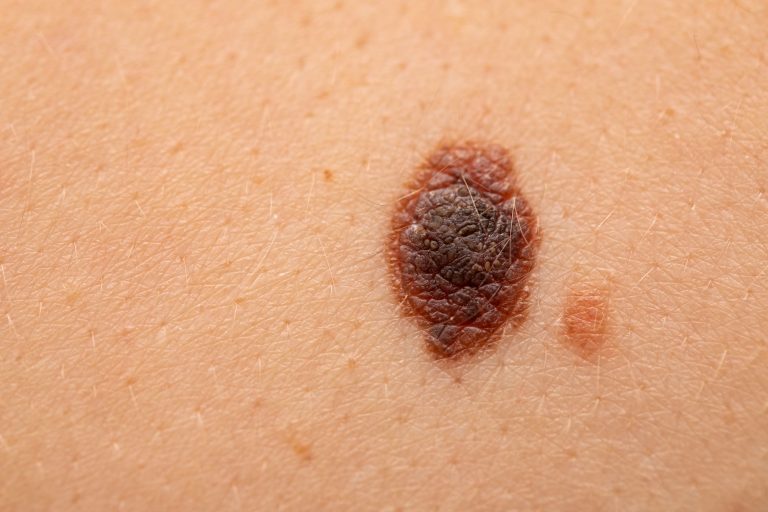
Skin Cancer is the most common of all cancers. Over one million Americans develop skin cancer every year. Overexposure to sunlight and tanning is the main cause of skin cancer, especially when it results in the blistering of skin. Other less common factors can include repeated medical and industrial x-ray exposure, scarring from diseases and burns, occupational exposure to harsh compounds such as coal and arsenic, or a family history of skin cancer. Fair-skinned people who sunburn easily are at particularly high risk for skin cancer and should always take precaution by wearing sunscreen with an SPF 30 or higher daily.
Basal Cell Carcinomas are a form of skin cancer most often found in fair-skinned people. It rarely is found in African American patients. Basal Cell Carcinomas are characterized by their fleshy nodule-like appearance often on the head, neck and hands. These tumors do not grow quickly. Left untreated, they will bleed, crust over, heal and then begin the cycle again.
Squamous Cell Carcinoma is characterized by red scaly patches or bumps and is the second most common type of skin cancer. It is usually found on the rim of the ear, the face, the lips and the mouth and is more likely to affect fair-skinned people than darker skinned people. This type of cancer can metastasize, but if caught early and treated by a board-certified dermatologist, there is a 95% rate of cure.
Malignant Melanoma is the most deadly form of all skin cancers and is characterized by asymmetric spots or bumps on the skin with irregular borders and non-uniform pigmentation of brown or black coloration. It is important to routinely check moles for development of these features especially if you have a family history of skin cancer. Any growing or changing mole should be evaluated by Dr. Claiborne immediately.
Treatment options for skin cancer depends on the type of skin cancer, size of the skin cancer and location of the skin cancer on the body. Potential treatments include excision with stitches, superficial radiation, Mohs micrographic surgery, and/or topical chemotherapy.
